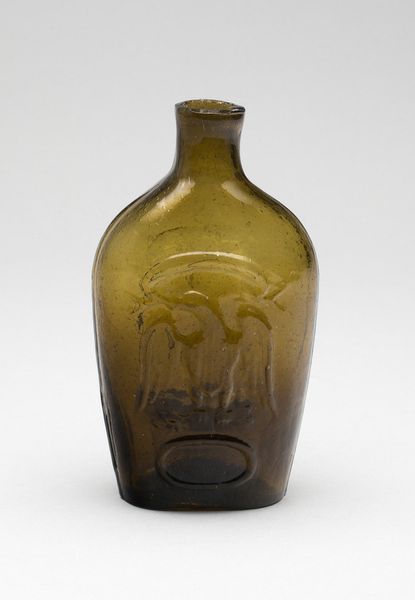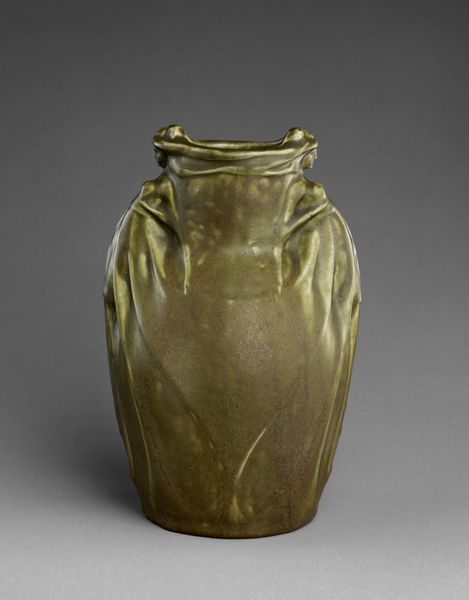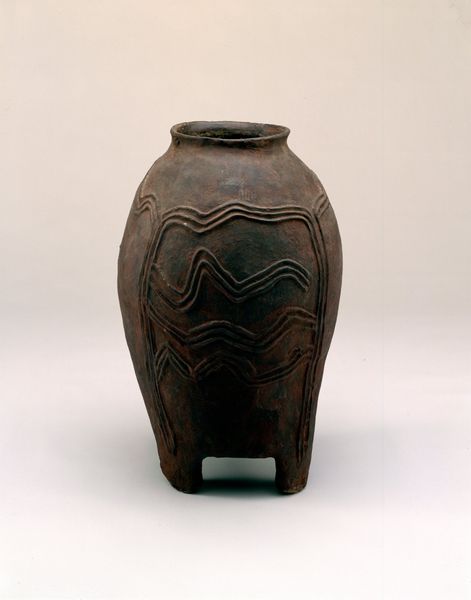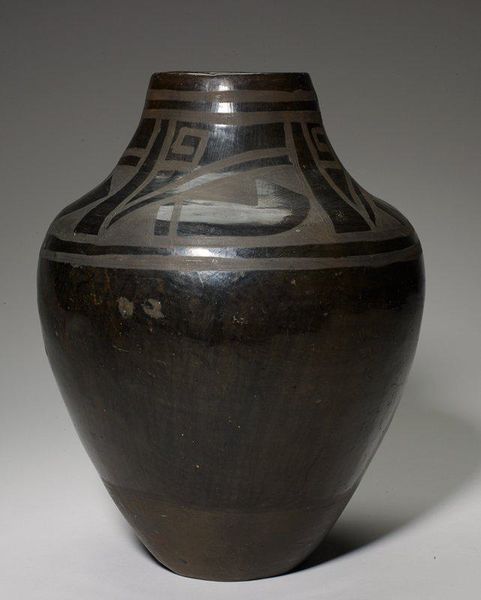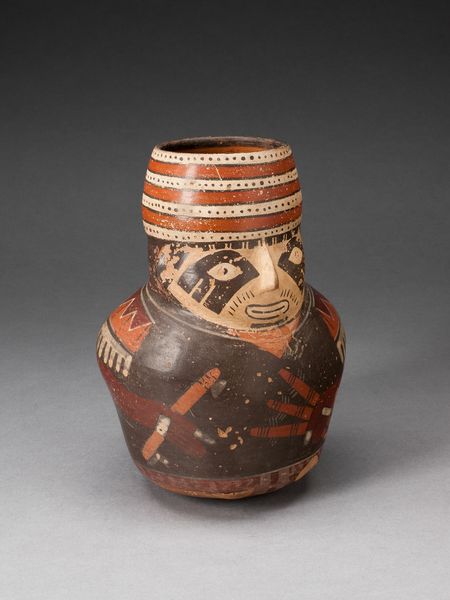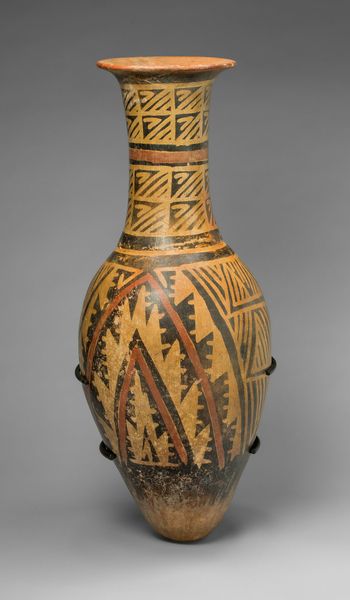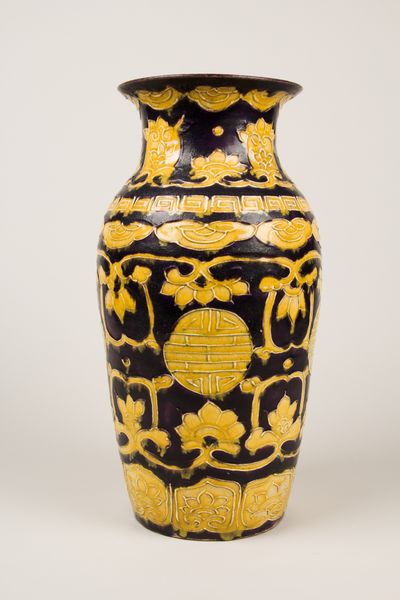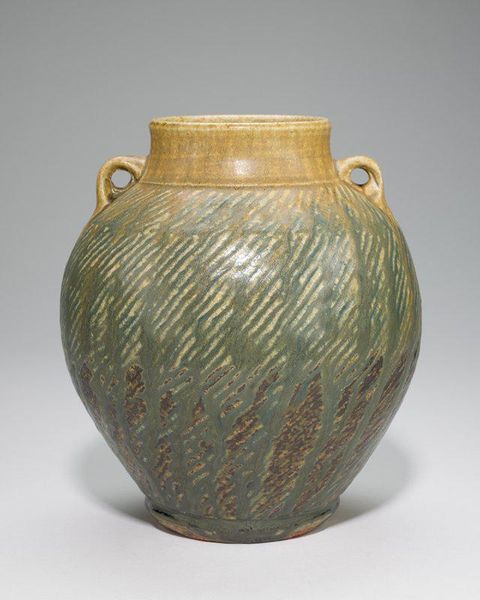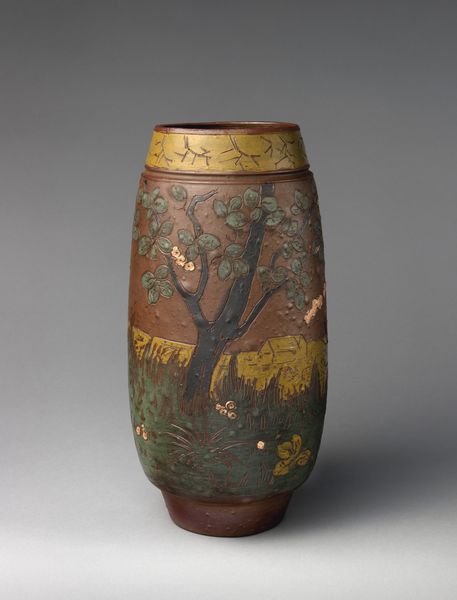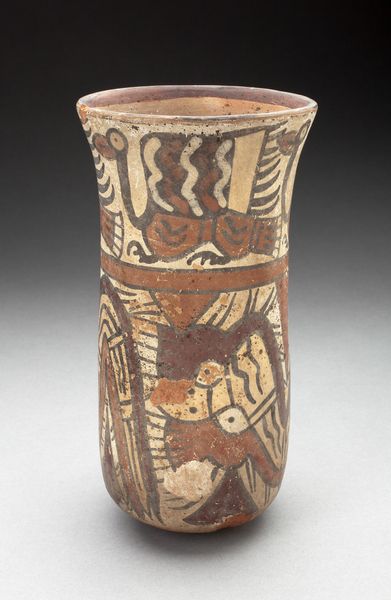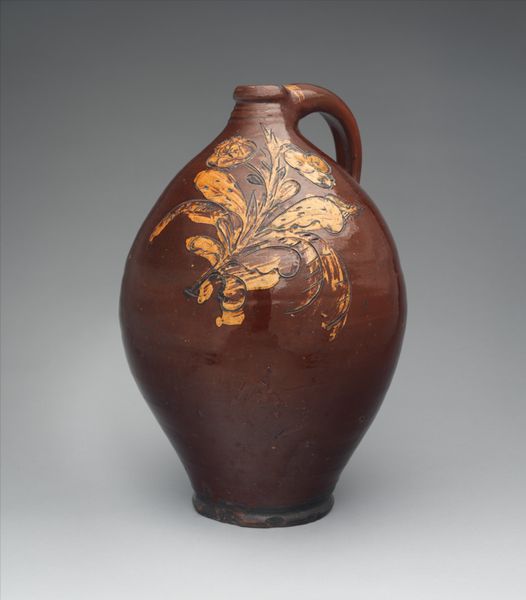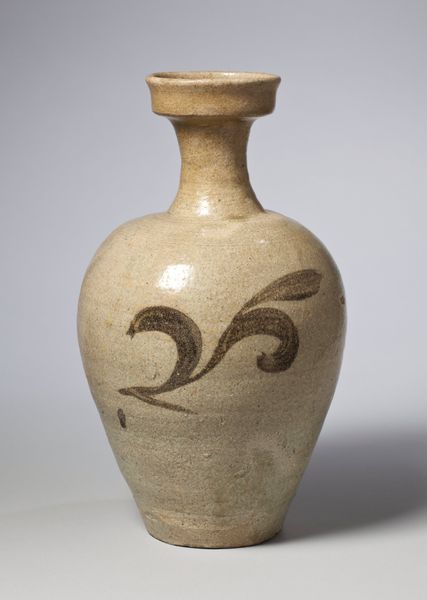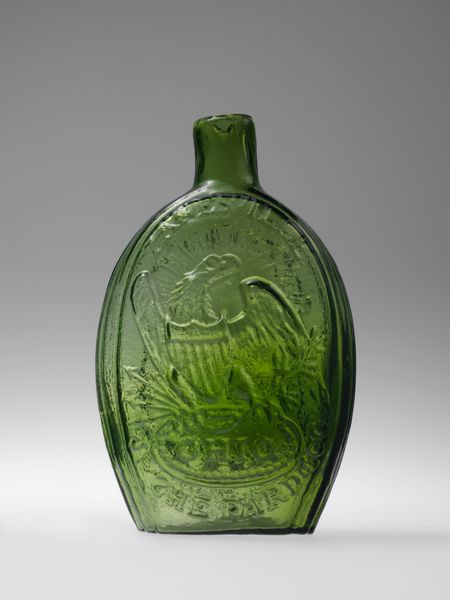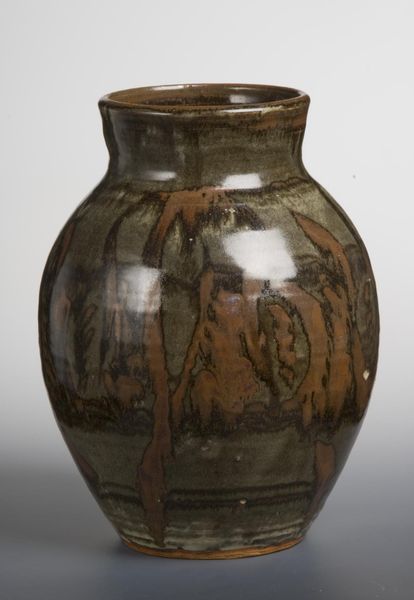
ceramic, sculpture
#
organic
#
art-nouveau
#
ceramic
#
stoneware
#
sculpture
#
decorative-art
Dimensions: 9 7/8 x 5 1/16 in. (25.1 x 12.9 cm)
Copyright: Public Domain
Curator: Here we have a stunning example of American Art Nouveau from the Van Briggle Pottery Company. This vase, created in 1902, resides here at the Metropolitan Museum of Art. Editor: My immediate impression is its earthy, almost subdued elegance. The matte glaze gives it a tactile, weighty feel, despite what I imagine is a relatively delicate stoneware body. Curator: Indeed. Van Briggle was known for his matte glazes, a result of experimentation with high-firing techniques. He drew inspiration from ancient Chinese ceramics he encountered at the 1900 Paris Exposition. It's also crucial to consider the social implications here. Art Nouveau arose in part as a reaction against industrialization, promoting handcrafted artistry over mass production. Editor: Exactly. This vase embodies that perfectly. The stylized, organic motifs—those poppy designs winding around the surface—aren't simply decorative; they speak to a longing for a closer connection with nature, a response to the rapidly changing urban landscape. You can almost see the maker’s hand at work, carefully sculpting the relief. Curator: Absolutely, and the material itself—the stoneware—is key. Unlike porcelain's refined delicacy, stoneware speaks to a more grounded, practical aesthetic. Van Briggle aimed to make art accessible, and the relative affordability of stoneware pottery allowed a wider audience to engage with his artistic vision. Editor: And think about how this piece functioned in the home. Beyond its aesthetic appeal, it's a vessel, meant to hold flowers, connecting the interior space with the outside world, further blurring the boundaries between art and life. Did Van Briggle engage directly with the laborers in his pottery, I wonder? Curator: Documentation shows that Van Briggle did emphasize a communal artistic process and credited his skilled workforce. So, looking at this "Vase," it is more than mere decoration; it reflects a specific cultural moment, a yearning for beauty amidst industrial progress. Editor: Right, and to reflect on how a revival of handcraft helped legitimize artists who worked outside established high art structures, creating an environment in which their contributions could be valuable and successful. Curator: I agree. Appreciating this vase encourages us to investigate our relationship to beauty, labor, and the things we use in our daily lives. Editor: Indeed, to reflect on the socio-political forces behind not just art creation but its reception and how we contextualize it today.
Comments
No comments
Be the first to comment and join the conversation on the ultimate creative platform.
